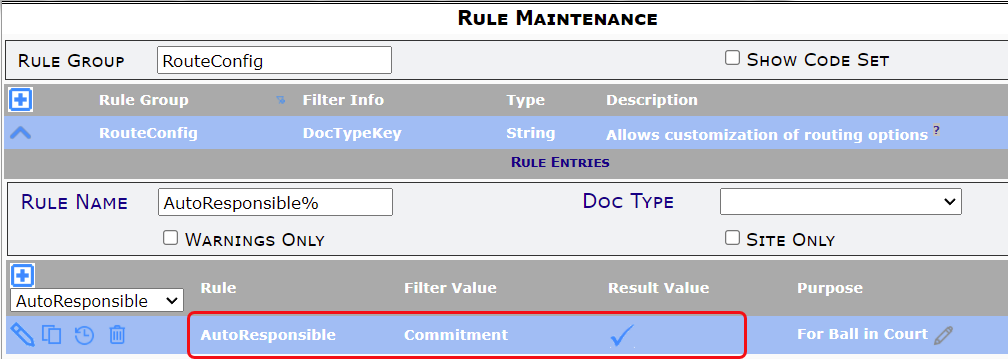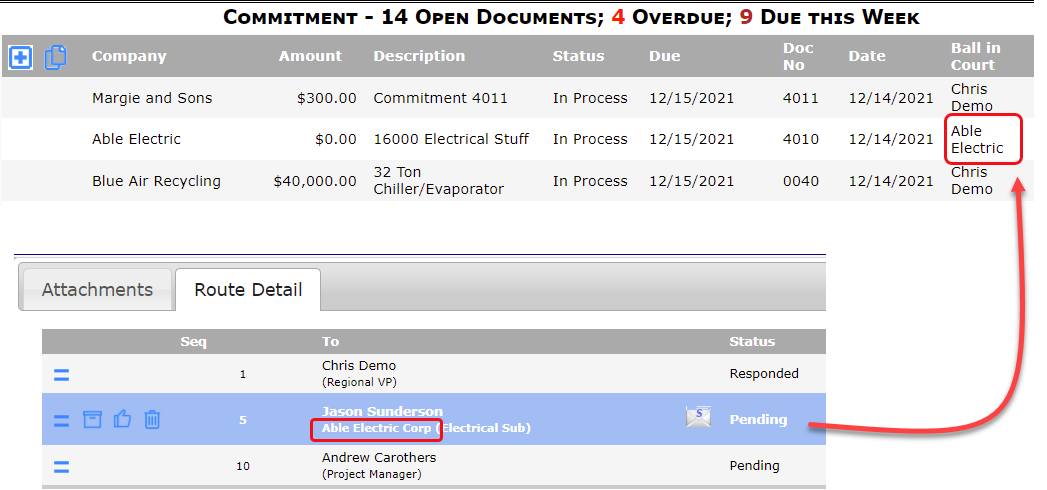Question:
When looking at documents in our project, we’d like to be able to tell if the document is waiting on one of us or is out to a vendor—to have a “ball in court” column, so to speak. How can we set that up?
Answer:
You can use the RouteConfig | AutoResponsible rule and show the Responsible column (perhaps relabeled Ball in Court) in the document list on your project.
Rule Maintenance:
When the RouteConfig | AutoResponsible rule is checked on, the primary company of the current routee will be used as the Responsible party on the document. As such, this Responsible party will change as the route recipient changes.

UI Configuration:
You may have to configure the document list on your Project Dashboard to show the Responsible column. Keep in mind that the document list can (and should be) configured by Doc type.

Example:
You will be able to tell where the route is currently at by looking at the Ball in Court column on the project’s document list.

Notes:
- Because the rule uses the Responsible field on a document internally, such documents do not need to have the Responsible field visible.
- If such documents do show the Responsible field, the rule will override any manual entry. We therefore recommend that the Responsible field be made read-only to minimize confusion.
- If the current route has multiple recipients (i.e., there are multiple people at the same Seq.) the most prevalent company is used. If the current user is included in the parallel route, they see their own name, even if not “most prevalent.”
- If there is no company associated with the current routee, the user name will show up as responsible. Employees do not have a primary company and therefore will be listed by name.
- When the current user is associated with the currently responsible company, the Project Dashboard will show the current user’s name instead of the company name. In other words, if you are responsible, you will see your own name.
- If the document has finished its routing, this rule no longer has any effect.
